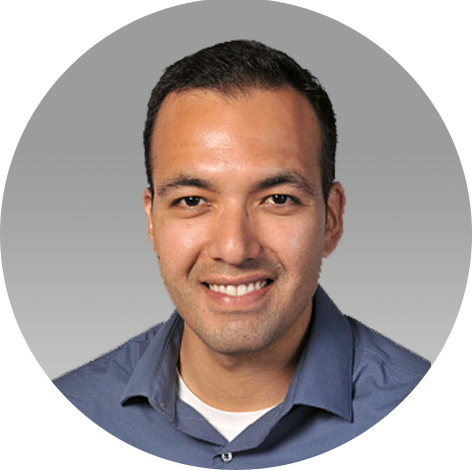Webinar: Novel Design Strategies for Effective Next-Generation Nuclear Localization Signal (NLS)-Therapeutics
10 AM EST, January 21, 2022
Research on the implementation of nuclear localization signal (NLS)-therapeutics has been a topic of intense interest since the core principles governing nuclear transport were awarded the Nobel Prize in 1999. Previously, Dr. Leyton's lab developed the compound Accum™ composed of NLS PKKKRKV from SV40 and linked to an endosomal membrane disruptive agent. Accum-functionalized antibody-drug conjugates (ADCs) displayed improved tumor cytotoxicity, and commercialized vaccines revealed potent preclinical efficacy and will soon enter Phase 1 trials. However, due to the non-specific cellular uptake of cationic NLSs, typical NLS-therapeutics is dependent on intravenous administration to clear rapidly from bloodstream and reduce tumor uptake. While NLS tagging can cause changes in nuclear transport pathways and impact nuclear localization efficiency.
In this technical session, Creative Biolabs has invited Dr. Leyton to describe the need to develop a more precise method in investigating nuclear transport dynamics of NLS-therapeutics. Moreover, Dr. Leyton will also present a de novo approach for generating novel NLSs with an atypical zero net-charge and evaluating various strategies to determine the worth for integration into NLS-therapeutics development.
During this webinar, we will discuss the following key points:
• Why nuclear targeting improves drug efficacy
• How nuclear transport functions
• What are the significant challenges for pharmaceuticals targeting the nucleus

Jeffrey Leyton Ph.D.
Associate Professor
Department of Nuclear Medicine and Radiobiology
Faculty of Medicine and Health Sciences
Université de Sherbrooke
Speaker's Bio
Dr. Leyton received his Ph.D. in Molecular and Medical Pharmacology from UCLA in 2008. He was a postdoctoral fellow in the Department of Pharmaceutical Sciences at the University of Toronto from 2008-2013. Dr. Leyton then joined the Department of Nuclear Medicine and Radiobiology at Université de Sherbrooke (Quebec, Canada). Dr. Leyton's current scientific impact provides a needed breakthrough for escaping endosome entrapment. A major overlooked aspect by scientists developing therapeutics reliant on entering cells for therapeutic efficacy is the assumption that after internalization, the therapeutic was able to freely diffused in the cytoplasm.
Dr. Leyton's laboratory was the first to demonstrate the application of cholic acid as a successful endosome escape moiety for biopharmaceuticals. Cholic acid could then be linked to nuclear localization signals (Accum™) and enhance nuclear localization. Dr. Leyton's laboratory was also the first to demonstrate that antibody-drug conjugates could be reprogrammed to localize to the nucleus and enhance their cytotoxic potency. Several international academic institutions integrate Accum™ into their therapeutics.
Q1: Could you modify regular IgM or IgE antibodies for infectious diseases?
A: Well, that's a great question and that's why I was really happy to be invited here, especially with the pandemic making it difficult to disseminate this work verbally. I imagine there's a way to do it, I would like to speak with an infectious disease expert to strategize on how to do this. But I don't have any kind of definitive answer for you now.
Q2: Do you have any experience using your antibodies to gain access inside platelets?
A: All we need is a target of cell surface targets. So if you have a good target for any cell type, we can theoretically do this.
Q3: As you mentioned that antibody modification with cholic acid-coupled NLS can increase antibody intracellular accumulation in target cells. Is there a recommended ratio of NLS to antibody?
A: So this is maybe where the ADC community can really help with any NLS modification of a therapeutics. It's because we did try to work out on DAR, but for this, it's very difficult. We haven't been able to do it through mass spectrometry.
And just for your ADC audience, if you notice, a research team from the Goldenberg group made a DAR 8 of SN38. And they were able to do that because of their PEG hydrophilic linker. And if you read all their literature, they never report an MS-derived DAR. It's extremely difficult, they use a kind of very unique ways through multidimensional liquid chromatography.
So the answer is that we just only have approximations of the NLS unfortunately, and we are trying to work with more spectrometry ways to look at this, but it is a difficult area.
Q4: Could you please give some future aspects for the NLS therapeutics in the antibody drug development regarding their delivery efficiency, stability or the potency?
A: My research program will focus on matching ADCs with nuclear active payloads. And in parallel, my science is also developing the novel NLS sequences, specifically with a zero net-charge. I'd like to then combine those two and to study pharmacokinetics and tumor targeting using molecular imaging.
So that's the plan for there, and then, we plan to test various ratios of modification DAR, and to see which one has the strongest anti-tumor killing and how we can advance that into Phase I clinical trials.
Q5: What kind of nuclear active payloads are you currently looking to use with ADCs integrating Accum technology? Would you consider auger-emitting radiopharmaceuticals as a good candidate for such an application?
A: My research program will focus on matching ADCs with nuclear active payloads. And in parallel, my science is also developing the novel NLS sequences, specifically with a zero net-charge. I'd like to then combine those two and to study pharmacokinetics and tumor targeting using molecular imaging.
To answer the question. I am actively interested in Auger electrons and welcome anyone interested to contact me. Auger electrons and alpha particles are ideal matches for nuclear targeted drugs. I also focus on chemotherapeutics active in the nucleus such as calicheamicins, SN38, and alpha-amanitin.
For Research Use Only. NOT FOR CLINICAL USE.
